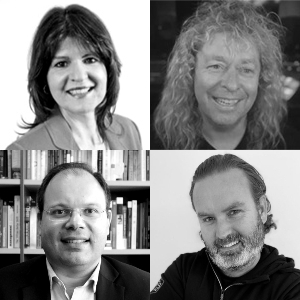In a collaboration between researchers, the government, and production manufacturers, materials can be recycled and reformed into new products. We talk about three R’s: reduce, reuse, and recycle. Professor Veena Sahajwalla offers a fourth: reform. Instead of shipping waste offshore, we could be harvesting the high value materials in our waste. Each year, 50 million tonnes of e-waste is produced globally. In Australia, fewer than 1.5% of the 4 million computers sold a year are recycled. The total value of the resources embedded in them approximates $70 billion.
With technology becoming more compact, smarter (with artificial intelligence) and having greater computing power, robots can now make decisions at fast speeds. The future of robotics is rapidly evolving. Elizabeth believes that robots are becoming more human-like and that we therefore need better, smoother human-robot interactions. Professor Elizabeth Croft wants to make sure that people are considered in the design of robots. In all of her designs, she starts by first observing people. “We need to think about how we’re going to get along with the robots,” she says, after all, they are already increasingly coming into our homes.
One can only imagine just what Sutton could have achieved if he was less isolated, more protective of his innovations and patents, more entrepreneurial, or had the right financial backing such as that which Tesla secured with the entrepreneur George Westinghouse. Lorayne Branch’s advocacy is compelling; Henry Sutton is an unsung Australian inventor arguably on a par with Edison, Bell, Tesla and Marconi. Her extensively researched monograph goes a long way in delineating his achievements and placing them in a broader context. This is a book that would certainly inspire any young Australian inventor and it deserves a large audience.
How can textiles quietly heal us? Are wearable medical devices of any use when patients are too stigmatised to wear them? What good is fancy cycling gear that won’t protect the rider? Can we close the loop on global fashion, the world’s second biggest polluting industry? From comfort and style to function and protection, clothing fulfils some of the most basic human needs; but now we’re exploring textiles that can contribute to wound healing, or even become body implants through a next generation recycling process.
This year, the assessors of the Royal Society of Victoria’s Phillip Law Postdoctoral Award in the Physical Sciences worked diligently through the pile of applicants that grows, year on year, with the growth in Victoria’s remarkable pool of talent. It is an intensely competitive field of Early Career Researchers and, this year, our assessors simply could not find a way to separate the two lead applicants.
“Both have made – and continue to make – significant contributions to modern physics with different, substantial potential for application,” explained Dr Peter Baines, the Secretary of the Royal Society of Victoria and one of the assessors. Ultimately, the two lead applicants were ruled a dead heat.
The Society congratulates Dr Sumeet Walia and Dr Nishar Hameed on their joint win of the 2018 Phillip Law Postdoctoral Award for the Physical Sciences!









